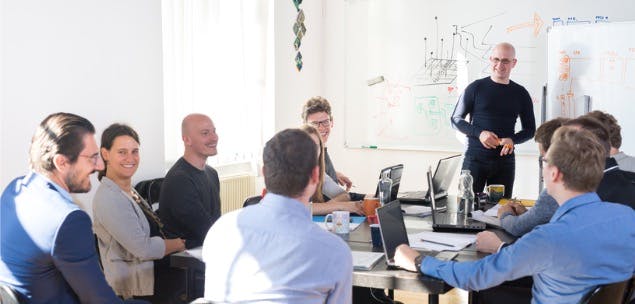I once heard a very senior leader in a global organisation remark, ‘You can have a long career here by going from one meeting to another and never actually doing any real work’. Can you relate?
In most organisations, an employee’s success (or failure) is measured against key performance indicators (KPIs). I have yet to see a KPI that says, ‘attend heaps of boring and ineffective meetings’.
Yet there is an expectation that people will do just that, on top of getting their task-driven KPIs done.
This requirement to attend poorly executed meetings while also managing to get stuff done is what drives down employee engagement scores and drives up feelings of discouragement.
It’s a (sad) fact
Much of the data available says that between 25 and 67 per cent of us say meetings are a waste of time. For example, a Harvard survey of 182 senior managers in a range of industries found:
- 65 per cent said meetings keep them from completing their own work
- 71 per cent said meetings are unproductive and inefficient
- 64 per cent said meetings come at the expense of deep thinking
- 62 per cent said meetings miss opportunities to bring the team closer together.
We sit through meetings, wishing we were somewhere else, doing something else.
Be honest and ask yourself, what kind of meetings are you having right now? Chances are, they will fall into one of these six types.
6 types of meetings
- PAINFUL
“I don’t even know why I am going.”
There is rarely anything useful accomplished; participation is constrained by lack of purpose and/or process. I don’t think I should even be in the meeting because nothing relates to me.
- WOEFUL
“I only go because I feel obliged.”
These meetings are destructive and counterproductive to getting any work done. They have a negative return on the investment of attending, yet still I feel like it’s my job to go.
- WASTEFUL
“I go even though I know it will be a waste of time.”
There is wanton and flagrant misuse of people’s time, effort and the organisation’s resources. I try to avoid these meetings at all costs and make all kinds of excuses to miss them.
- USEFUL
“I don’t complain about going, but I don’t like them either.”
Sometimes, I get a return on my time investment with one or two things. Maybe half of the contributions are relevant.
- MINDFUL
“I go and cooperate; for the most part the time is well spent.”
Thought has been given to the agenda and attendees and for the most part good work is done. On many occasions, I am pleasantly surprised by these meetings.
- PURPOSEFUL
“I walk out feeling energised — and surprised!”
All of us bring energy into the space, and we communicate well. Ideas spark off each other. There is genuine collaboration providing 100 per cent return on the time investment (if not more). Dare I say it, they are often even fun.
Now, which would you rather sit through?
Great! Me too.
Meet with purpose
So, the first step to running a purposeful meeting is to remember that we as humans are social creatures. We put a lot of importance on team work, team spirit, and how we feel about our colleagues. We want to like our work mates, and therefore the way we meet with everyone in our organisation should not only reflect that, but encourage it.
Begin to think about how you might transform bad meetings to good.
- Pay attention to what percentage of your time is currently spent on each of the meeting types: painful, woeful, wasteful, useful, mindful, purposeful.
- Notice how much of this is within your control (or not).
- Think about what you could change right now to make your meetings more purposeful and playful.
Everyone will thank you when you do.
Donna McGeorge is a speaker, author and mentor who helps people make their work work. Using a creative, practical approach, she improves workplace effectiveness while challenging thinking on leadership, productivity and virtual work. ‘The 25-Minute Meeting: Half the Time, Double the Impact’is published by John Wiley.

